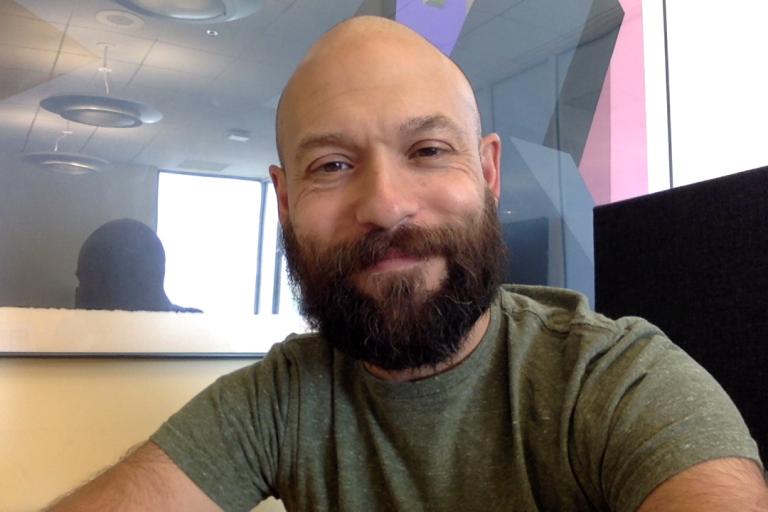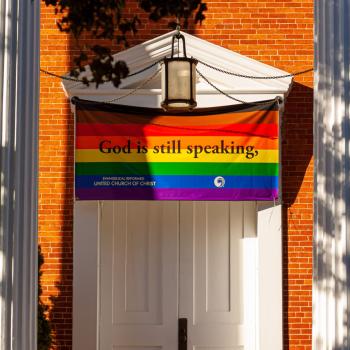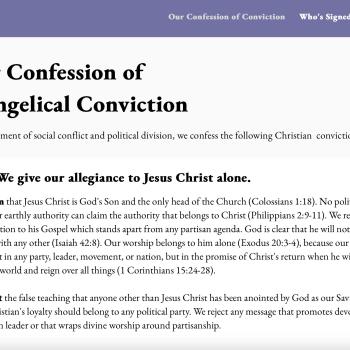Living in Germany in the late 1990’s and early 2000’s was a unique experience. At that time Germany was truly a culture in flux. The Wirtschaftswunder (economic miracle) of the 1950’s was now a full generation old. The EU and the Euro had just arrived on the scene and countries were struggling with this new, corporate identity. Globalization and the Americanization of German culture was obvious and, as an American overseas, rather irritating. Migrants from Africa and the Middle East flowed into major commercial hubs. By my time in country, Turkish Döner-kebap stands had even found their way into the villages, like the small Bavarian “Dorf” I lived in. Most men who had fought in the war were quite old– their stories already transformed into social commentaries and laments by post-modern authors and existentialist playwrights. In private, families discussed the war only with great trepidation, if at all.
From an observation platform near the newly renovated Berlin Reichstag, one could see hundreds of cranes looming over East Berlin. It was the largest single construction site in Europe at the time. German identity was being reshaped. A new day was dawning.
Yet for many young Germans one identity lingered, almost unshakeable. That identity was National Socialism. or, in plain terms: “Nazi.” In the 1990’s political correctness dominated Germany like in the United States today, probably more so given Germany’s more recent past. As such, displays of national, or even regional, pride were often met with great skepticism and self-disparagement. The fear of something intrinsic in the German soul reemerging was palpable, even if, usually, unfounded.
One feature of this social skepticism was the persistent drumbeat for the average German to atone for past evils, lest they fall back into old ways. Reminding the next generation of the horrors of the past was itself hardly debatable. However, how politicians, educators and celebrities carried out the task seemed quite open to criticism. For many, it started to feel as if merely being ethnically German, or biologically descended from a Nazi (whatever that might mean), was a sufficient condition to treated as Nazi. The program might have been rightly considered a kind of prolongation of Post-World War II allied “de-nazification” doctrines.
In my own experience, however, I began to notice something happening. Over time I started to sense these efforts were beginning to backfire on those who thought they were safeguarding against such evil from ever again cropping up. One could describe this emerging dynamic as such: “since you keep calling me x, no matter how much I protest in response, I will therefore simply embrace x.” In the case of Germany, “x” stands as a placeholder for the identity “Nazi.” I use the variable here, however, because I believe that ascribing identity “x” to a particular people group, even if without warrant, can, over time, motivate the targeted group to simply embrace the ascribed, albeit false, identity.
We have examples of this in our own culture.
Racism and The Case of “2 Live Crew”
In her incisive essay on intersectionality–a concept she invented–and the plight of the black woman in America, critical race theorist Kimberle Crenshaw highlights a popular racist narrative. The narrative stereotypes the black man as a social degenerate and sexual deviant. Crenshaw recounts the story of the rap group “2 Live Crew,” a group whose music I remember coming of age in the early 1990’s, and that I wish I could forget.
Crenshaw explains the controversy:
In June 1990, the members of 2 Live Crew were arrested and charged under a Florida obscenity statute for their performance in an adults-only club in Hollywood, Florida. The arrests came just two days after a federal court judge ruled that the sexually explicit lyrics in 2 Live Crew’s album, As Nasty As They Wanna Be, were obscene. Although the members of 2 Live Crew were eventually acquitted of charges stemming from the live performance, the federal court determination that Nasty is obscene still stands. This obscenity judgment, along with the arrests and subsequent trial, prompted an intense public controversy about rap music, a controversy that merged with a broader debate about the representation of sex and violence in popular music, about cultural diversity, and about the meaning of freedom of expression.
Kimberle Crenshaw, “Mapping the Margins: Intersectionality, Identity Politics, and Violence against Women of Color,” 1283.
As someone who recalls “2 Live Crew’s” lyrics, I will not reproduce them here. Goodness and sanity prevent me from doing so. If one must know how bad they really are, one will have to perform the Google search oneself.
However, Crenshaw points out several problems with the case against the band. One of them was the selective nature of choosing 2 Live as a target of an obscenity suit while white comedians like Andrew Dice Clay, equally as foul, were being courted by mainstream media outlets. Still, one thing Crenshaw is clear about is the objectively misogynistic nature of 2 Live’s lyrics and how they had the potential to exacerbate sexual violence against black women.
However, in a fascinating account, Crenshaw details the renowned Harvard lawyer, Henry Louis Gates, incredible defense of 2 Live. It is Gates’ argument in defense of 2 Live that interests me here. Crenshaw states,
Gates contended that 2 Live Crew’s members were important artists operating within and inventively elaborating upon distinctively African-American forms of cultural expression. According to Gates, the characteristic exaggeration featured in 2 Live Crew’s lyrics served a political end: to explode popular racist stereotypes in a comically extreme form.
Crenshaw, Mapping, 1241
In short, Gates was arguing that 2 Live was merely acting out a popular stereotype among the black community, i.e., an identity ascribed to it by white racists. Moreover, 2 Live’s lyrics were an artistic expression of that stereotype, not an actual call to treat women as sex bots.
Black Men as Social Outlaws
What was the stereotype that these youngsters from Miami–one of whom was actually Asian-American–were apparently “exploding?” Crenshaw describes the stereotype ascribed to black men:
Against a historical backdrop in which the Black male as social outlaw is a prominent theme, ‘gansta’ rap’ might be taken as a rejection of a conciliatory stance aimed at undermining fear through reassurance, in favor of a more subversive form of opposition that attempts to challenge the rules precisely by becoming the very social outlaw that society fears and attempts to proscribe.
Crenshaw, Mapping, 1289
In other words, black men were tired of defending themselves against this false identity of outlaw and deviant given them by racists. They were no longer interested in reassuring the culture that they were not these things: sexual monsters and violent thugs. Instead they, or at least groups like 2 Live, embraced the identity falsely ascribed them. In doing so, they hoped through an extreme, symbolic expression of the activities associated with that identity, to “liberate” themselves “from the racism that permeates those stereotypes” (Crenshaw, 1241).
In a sense, who could blame them?
Whether or not the phenomena of “Gansta’ Rap” and groups like 2 Live Crew represent merely an artistic (i.e. notional) acceptance of this false identity or a real one, I cannot say. It seems 2 Live never repented or distanced themselves from either the false image or their artistic expression of it. But, perhaps the verdict on that is still out.
Nevertheless, Crenshaw makes it clear in her essay that the ultimate victim of all this, both the racial stereotyping that gave rise to the false identity and the creating of “art” from that identity, is still the black woman. She, the black woman, is inevitably the one who suffers most. I am compelled to agree with Crenshaw on this point, although I imagine she might, tragically, view that agreement with suspicion.
The “White Man” as Born Racist and Ingrate
In a recent interview with Tucker Carlson, the noted economist, Glenn Loury spoke about the dangers of accusing people with a false identity:
How many times can you remind the white majority of this country that their numbers are shrinking and they’re about to be dominated by a coming nonwhite coalition of Latino and black and whatnot? How many times can you tell them that they are intrinsically racist? That their lives are built upon an unearned privilege?
How many times can you accuse them of failing to see your humanity when in fact you are living in the freest country and you are the richest people of African descent ever to have walked on the planet? I’m talking about black Americans.
How many times can you do that and not have them get the idea that they’ve got an identity, too, that is a racial identity and it’s not yours. That’s not the world you want to live in. You don’t want to be told in response to your iconoclasm, we’re going to tear down all the statues. We don’t like Mount Rushmore. We think the Founding Fathers are full of [bleep].
Glenn Loury on “Tucker Carlson Today” [emphasis added].
Loury, with uncanny insight and courage, dares to point out this shared feature of human nature, one that exists in all cultures, everywhere and at every time. We, the human species, falsely label one another. Moreover, those false labels are usually, perhaps even overwhelmingly, negative.
There are two primary motivators that lead people to ascribe false identities to individuals or social groups. One is genuine hatred, the other is opportunistic gain. In the first instance, it may be the black person who genuinely believes that “Whitey is the devil” and, therefore, hates him. In the second instance, it could be the black or white person, who is willing to ascribe the racist or privileged label to whites, not because they believe it is true, but because their is something in it for them, some social benefit to be had.
However, my focus here is not on the perpetrators of unwarranted accusation or malignant generalization. My interest is in the response of those accused. Did young black men wind up embracing the false identity spewed about by those who hated them? Did young Germans give into the constant political pressure, even if from well-meaning educators, to repent of their grandfathers’ Nazi identities? The phenomena of “Gansta’ Rap” seems to suggest yes. So does the rise of hard right political groups in Germany today.
Does this suggest, as Loury intimates, that white Americans will eventually embrace the identity being ascribed to them as racist and privileged? If so, how might they react? More importantly, however, how should Christians respond to these false accusations: whether it be of “white racist,” “black deviant” or even plain old “Nazi?”
Three Responses to Being Falsely Accused of Racism
It is one thing to be falsely accused of an act. Usually, there are means to rectify such accusations, at least in a country with decent laws and affordable lawyers (or honest tribal elders). However, to be falsely accused of an identity is another thing. For, unlike what we do, which can be gauged as right or wrong, factual or fabricated, what we are cannot be evaluated in normative or forensic terms. We are not identical to our sins, at least not yet. Our identity is sacred regardless of what we do, even if what we do matters to who we are. Thus, to misunderstand our identity or think falsely about it can be devastating to the human person.
The image of God, although defaced by sin, is never fully removed from a human being. Each and every human being is a child of God, this much is true. Therefore, even if some, most perhaps, live in rebellion against their heavenly Father, they are still objectively His children. “Child of God” is the correct identification for all human beings, from conception to eternity future. How one responds therefore to a falsely ascribed identity is imperative. When accused at the level of one’s sacred identity, there are three possible responses:
Option 1: Fight Back
One option that some will choose is to fight back against the creators and perpetuators of false identities. However, if one fights back using the same tools as his or her accuser, then the outcome is almost a foregone conclusion. There will be conflict and division, anger will mount and bitterness will spread. The battle will be at first political, becoming increasingly nasty, until it goes beyond political means. Finally, if a better way forward is not found, conflict may eventually turn violent. This is roughly where we are in America today, and it is why men like Loury are rightly concerned about the current state of affairs. After all, when lawlessness increases the love of many will grow cold (Matt 24:12). To fight back in a worldly manner is to become like the enemy that accuses you. It is not the way of Christ, but it is the natural state of men.
Option 2: Give in to Racism
The second response is quite the opposite. It is to give in to the false identity, accepting it as if it were true. This has been a hallmark response of many today with regard to the accusation of racism. This phenomena is especially poignant among white Evangelical Christians who have capitulated to the mounting attacks from advocates of Critical Race Theory.
Megachurch pastors who have much to lose, or shallow men and women susceptible to the powers of suggestion and manipulation, cave rather quickly to social stigmatizing. Of course, the motivation does matter. Some might actually come to believe they are racist, while others feign acceptance, so as to receive special benefits: e.g. a new book deal or maybe an appearance on CNN.
Either way, the power of propaganda is great. It stigmatizes, preying on the weak and sensitive. Philip Hallie, in his classic essay on cruelty, explains that the real triumph of the cruel person (e.g., the slave master or KZ Kommandant) came at the point when their victim, e.g., the black slave or Jewish prisoner, finally accepted the identity that had been forced upon them. This is the ultimate in humiliation:
Institutionalized cruelty…is the subtlest kind of cruelty. In episodic cruelty the victim knows he is being hurt, and his victimizer knows it too. But in a persistent pattern of humiliation that endures for years in a community, both the victim and the victimizer find ways of obscuring the harm that is being done. Blacks come to think of themselves as inferior, even esthetically inferior (black is “dirty”); and Jews come to think of themselves as inferior, even esthetically (dark hair and aquiline noses are “ugly”), so that the way they are being treated is justified by their “actual” inferiority, by the inferiority they themselves feel.
Philip Hallie, From Cruelty to Goodness.
To accept a false identity is wrong, for it propagates a lie about what man is. And, it is Satan who is the father of lies (see John 8:44) and who constantly seeks to destroy God’s creation, in particular those made in His image. Moreover, as in the case of 2 Live Crew, when false identities are believed or accepted as true, they not only harm the individuals believing them but have far-reaching collateral damage (e.g., young black men accepting the false identity of sexual deviant and thug hurts black women).
Fortunately Christ has given us a way out when faced with the man’s lies and the devil’s schemes. For Jesus never accepted the false attributions of the Romans or the Jews, nor did not call down legions of angels to destroy them by force. He gave us a third option. He neither fought against flesh and blood (Ephesians 6:12ff) nor did he give into them.
Option 3: Resist in Love
The proper response to a false accusation is neither to fight with the same means as one’s accuser nor to accept a false identity as true. Instead, the Christian stands firm in their identity as a new creation in Christ. They do not accept the accusations of the world, or of the lord of the world whose name is synonymous with “accuser.” We cannot stoop to the same means as Satan. If we fight back in the same fashion, then we too become accusers ourselves. But Christ did not come to judge the world, He came to save it (John 12:47). We are called to do the same.
This stance is quite difficult, however. It never will be easy to follow in the footsteps of the suffering Messiah. Some will tend to give in while others tend to fight back. Few of us will have the courage to take the stripes from our enemies lash without trying to take hold of the whip ourselves. I am not suggesting that there aren’t times for just violence. We do live in that kind of world and Jews and Black slaves who resisted physical force with physical resistance were likely justified in doing so. I am not a pacifist.
However, as Christians, when it comes to verbal barbs and psychological assaults the likes of which we see today, then we must resist in love. Our identity is not our own. Our identity is in the divine Nature itself. It is wrapped up in God’s own identity. And that is an identity that needs no defending, for it is an all-powerful, all-knowing and eternal one.















